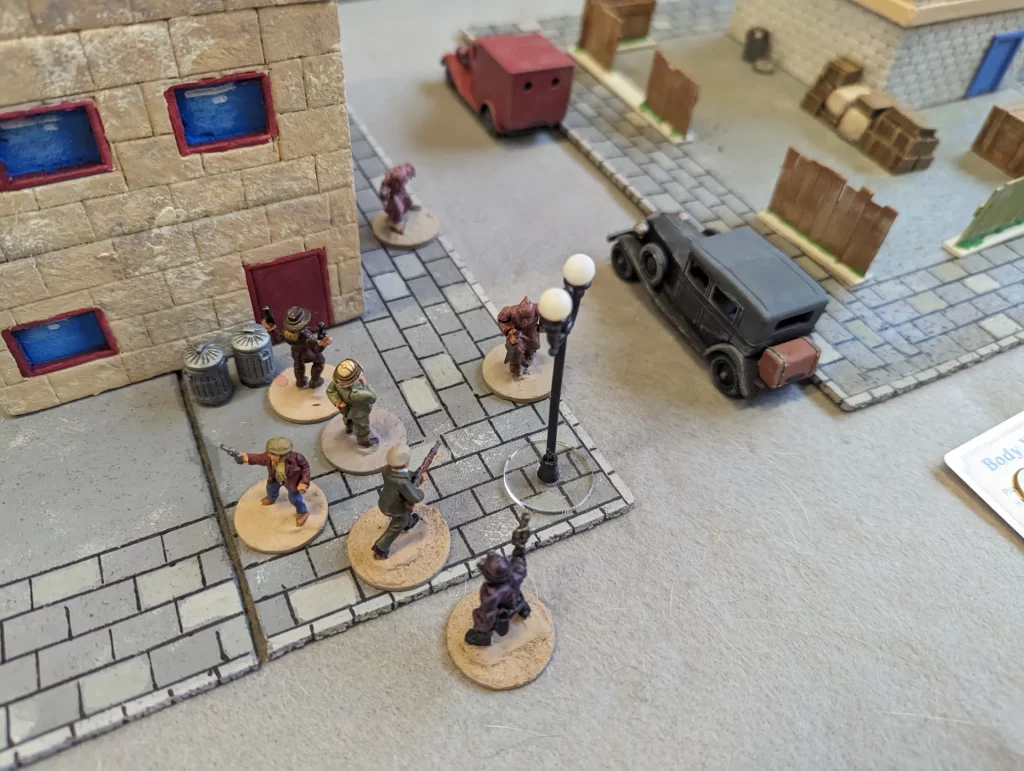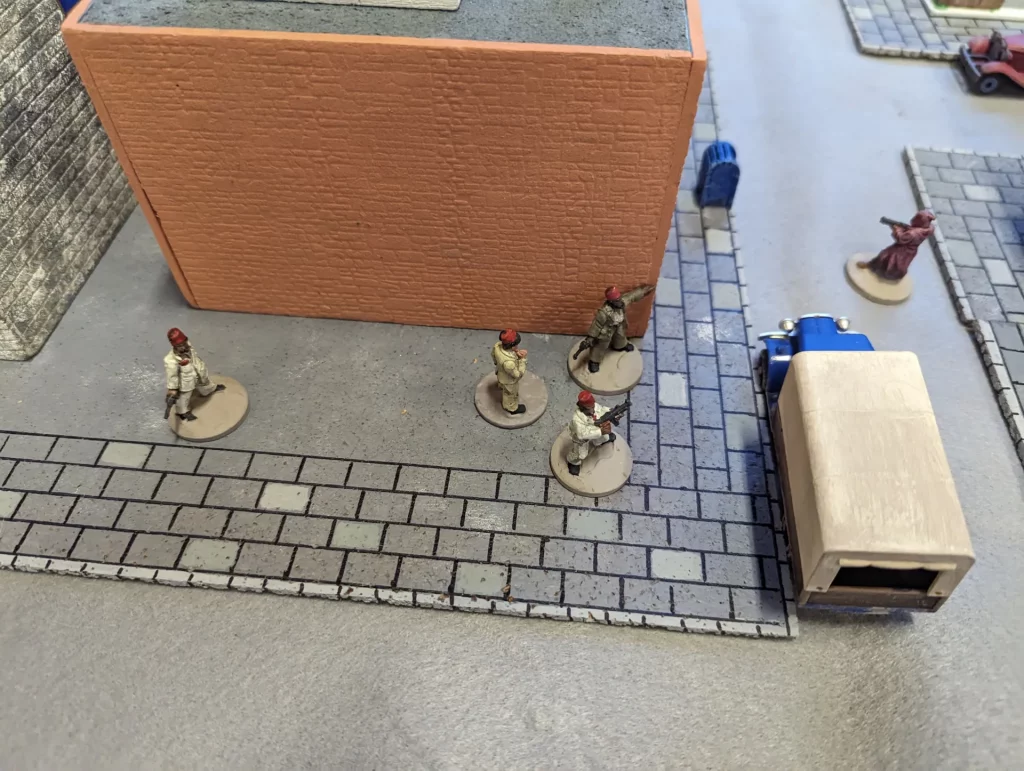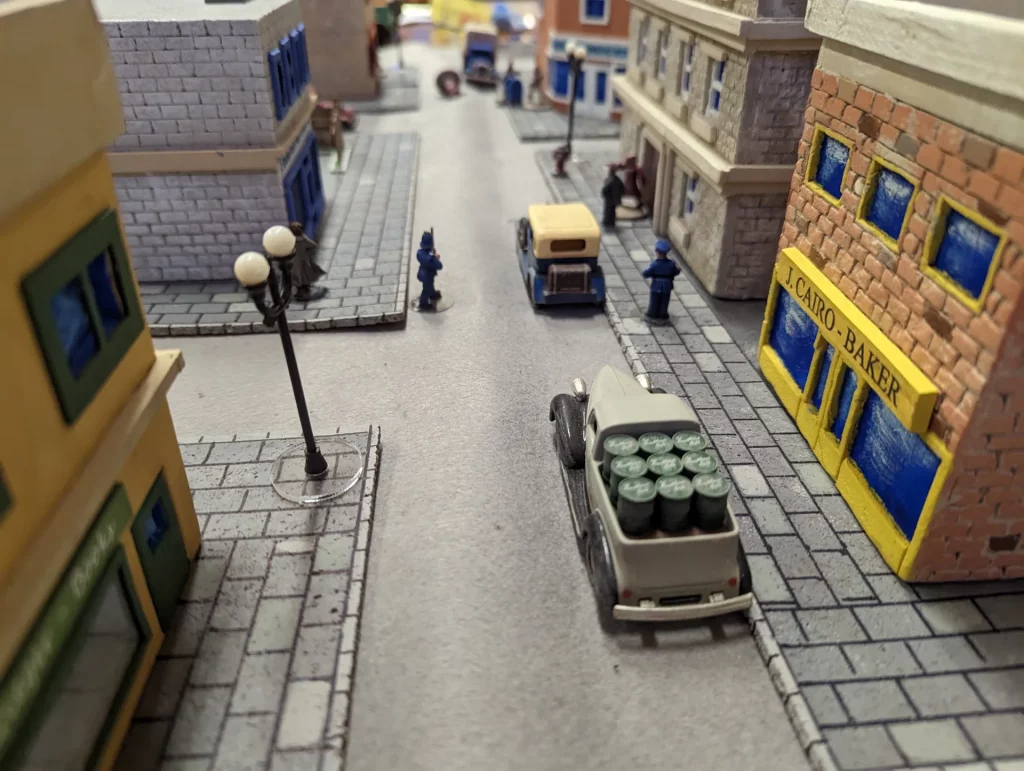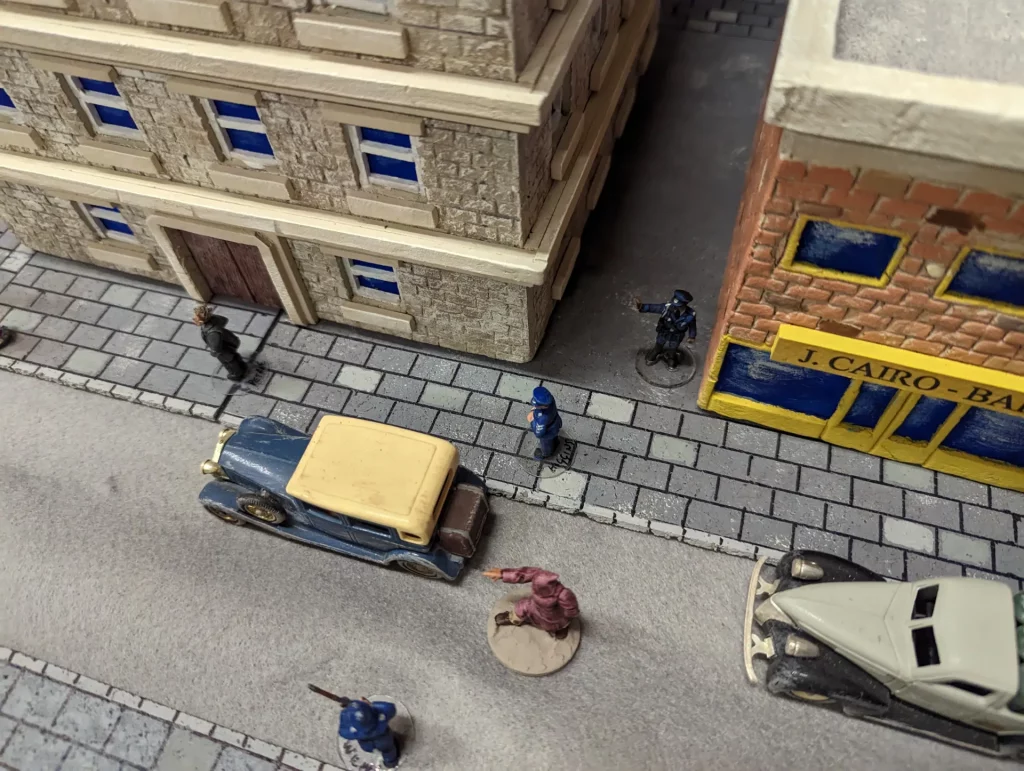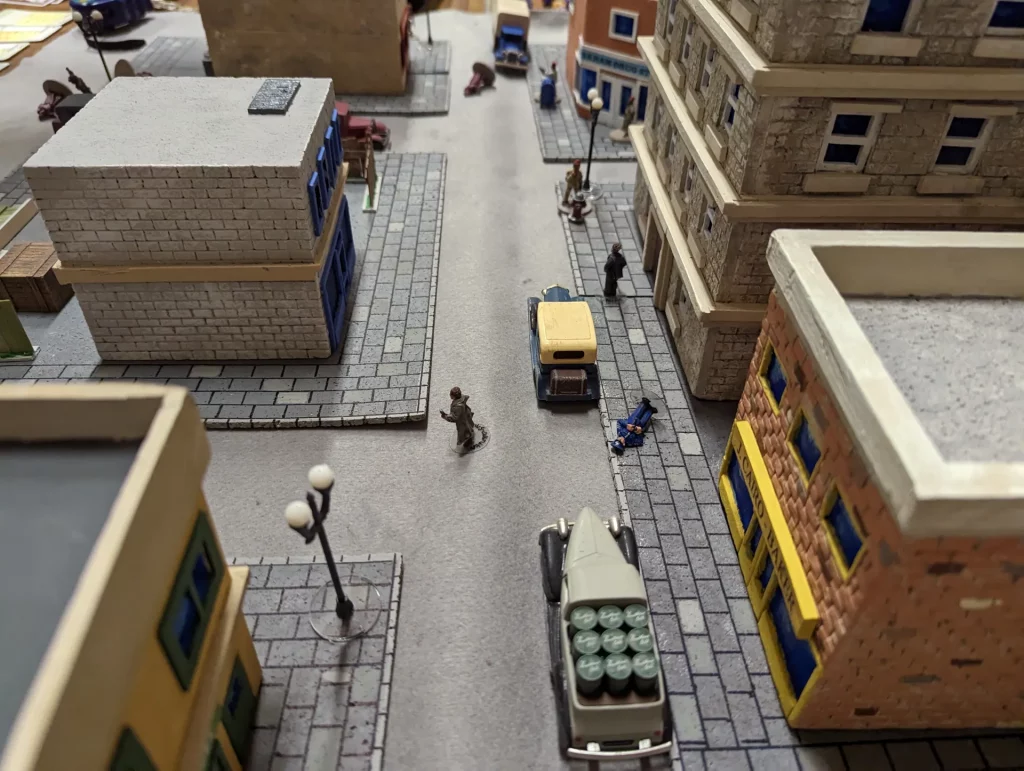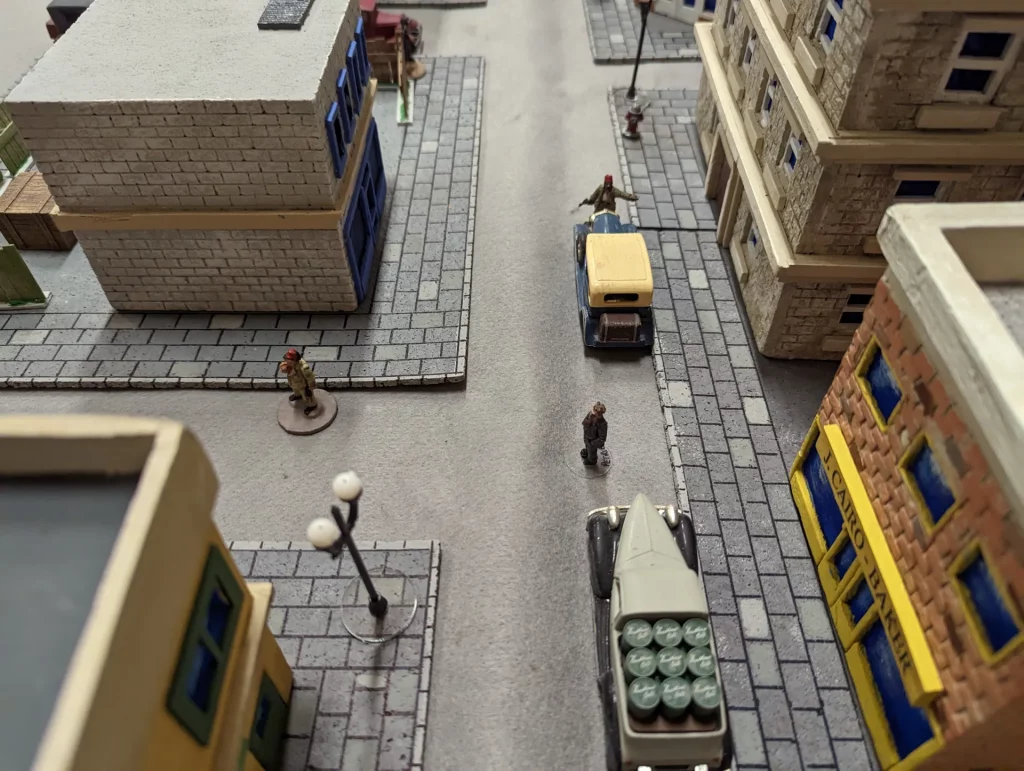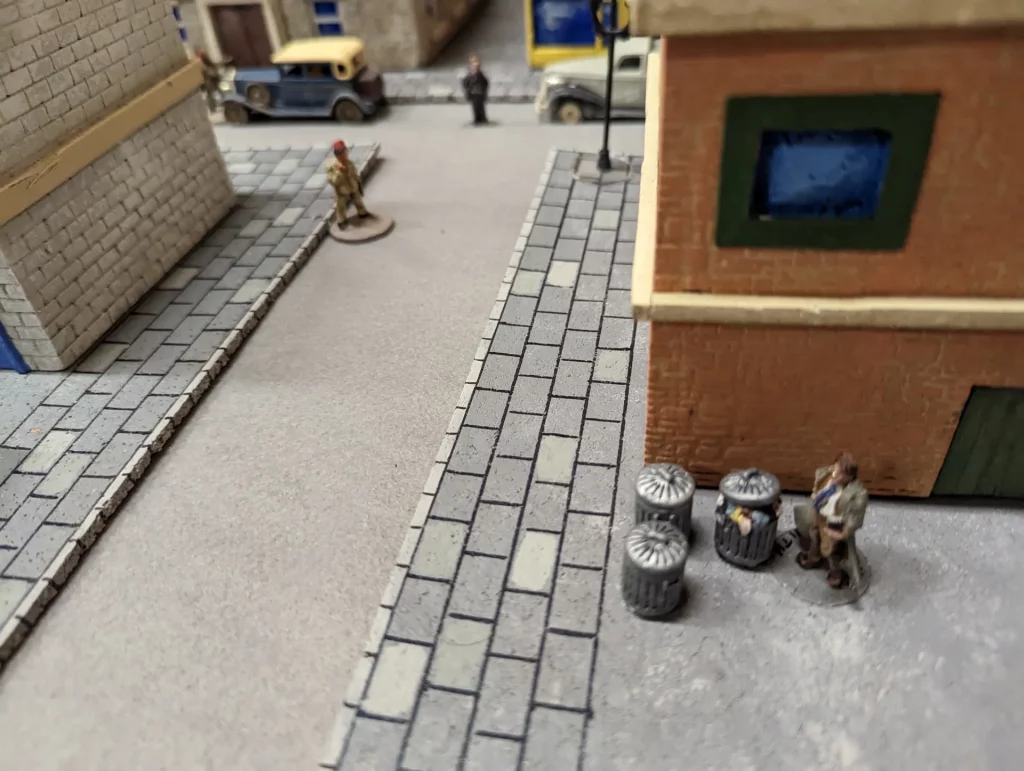Pulp Alley
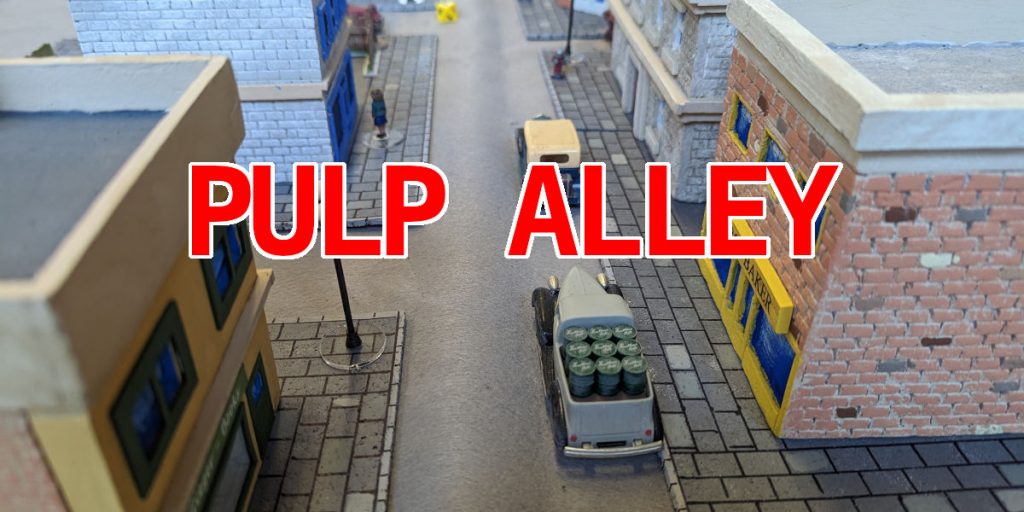
Our wargame this week was Pulp Alley, a 28mm skirmish game designed for pulp action adventure scenarios. For our game, we were in the city of Arkham in 1920s America, hunting down a cult of Nyarlathotep. We had three players, each competing to be the ones that got hold of the cult’s plans. So though we were all playing against the game, we were also competing with each other.
We each had a league (or faction):
- Scotland Yard (my faction, what they were doing in the US I don’t know)
- The Phantasm League – a hero and his team
- Guardians of Karnac – a secret sect of Egyptians
The table setup looked pretty good (none of it mine, all done by one of the other club members). My Scotland Yard league consisted of five characters, each with their own statistics and special abilities.
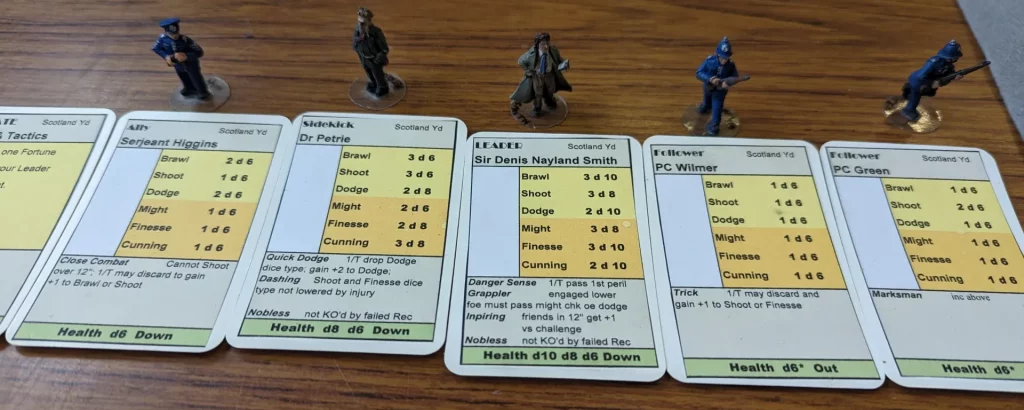
The rules seem to be generic, allowing to build you own leagues and characters to fit into the type of scenario you want to play. Each character has six statistics, each with a different dice type and number of dice. They also have a health. As they get wounded, their health die can drop, which caps their skills.
Some characters, like my PC Wilmer and PC Green were followers who are taken out with a single wound. Other characters can take more wounds, have better skills and more abilities.
Our mission was to locate the leader of the Cult of Nyarlathotep and obtain their plans for whatever it was they were trying to do. The cult leader was somewhere (they didn’t start on the table), but a number of ‘minor plot points’ (NPCs) were around the city who could be apprehended to advance the plot and increase chance of the main cult leader appearing.
The game started by randomly determining the ‘Director’, who gets to decide which player gets an activation. One character is activated, and then it moves on to another player. The Director has a lot of control over order of play, so they could activate all their characters before allowing anyone else to activate, they could go last to see what everyone else does, or they could mix things up however they want.
If a combat happens where a character wounds an enemy, but doesn’t get wounded themselves, the player of the winning character gets to take over the Director role.
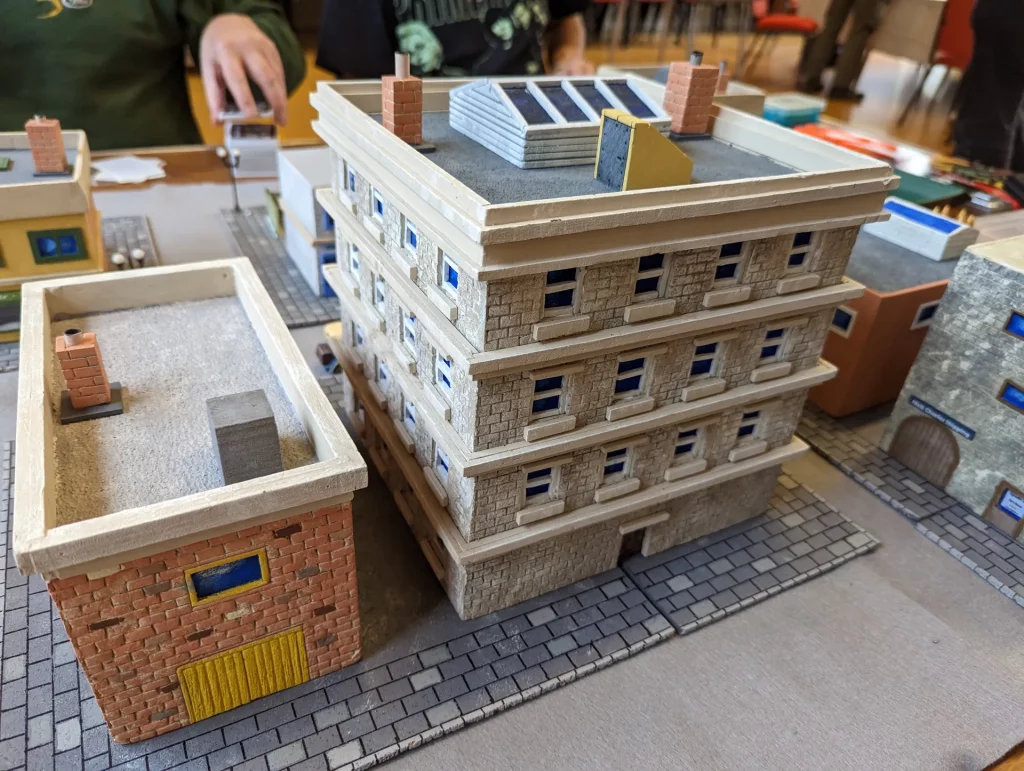
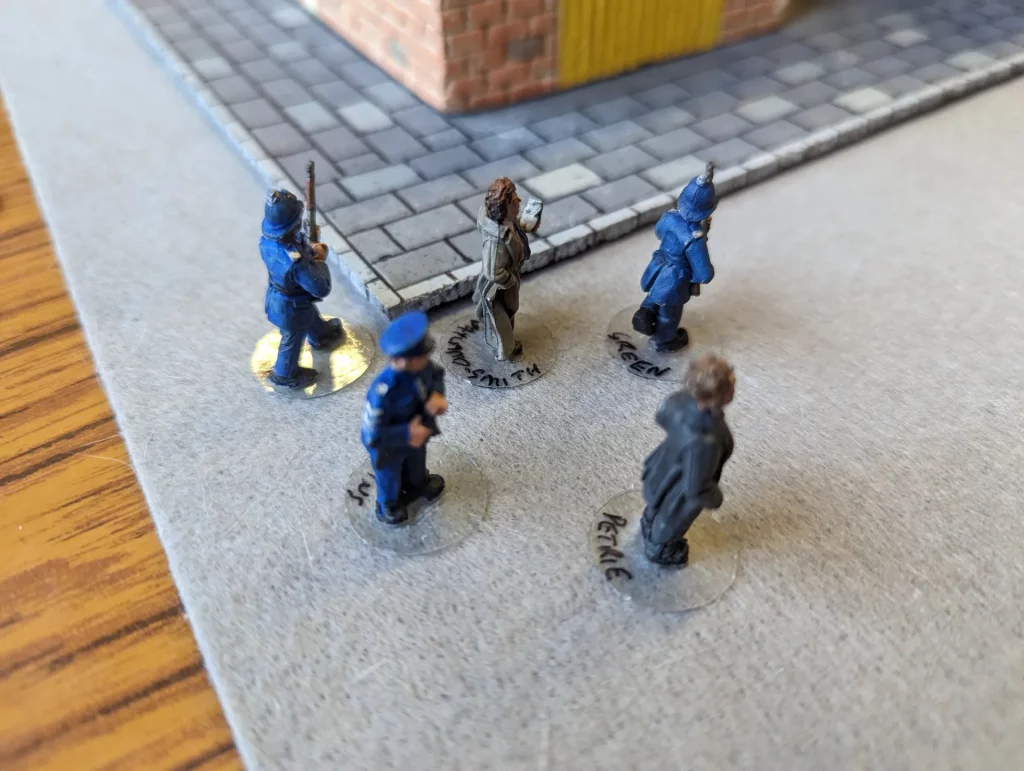
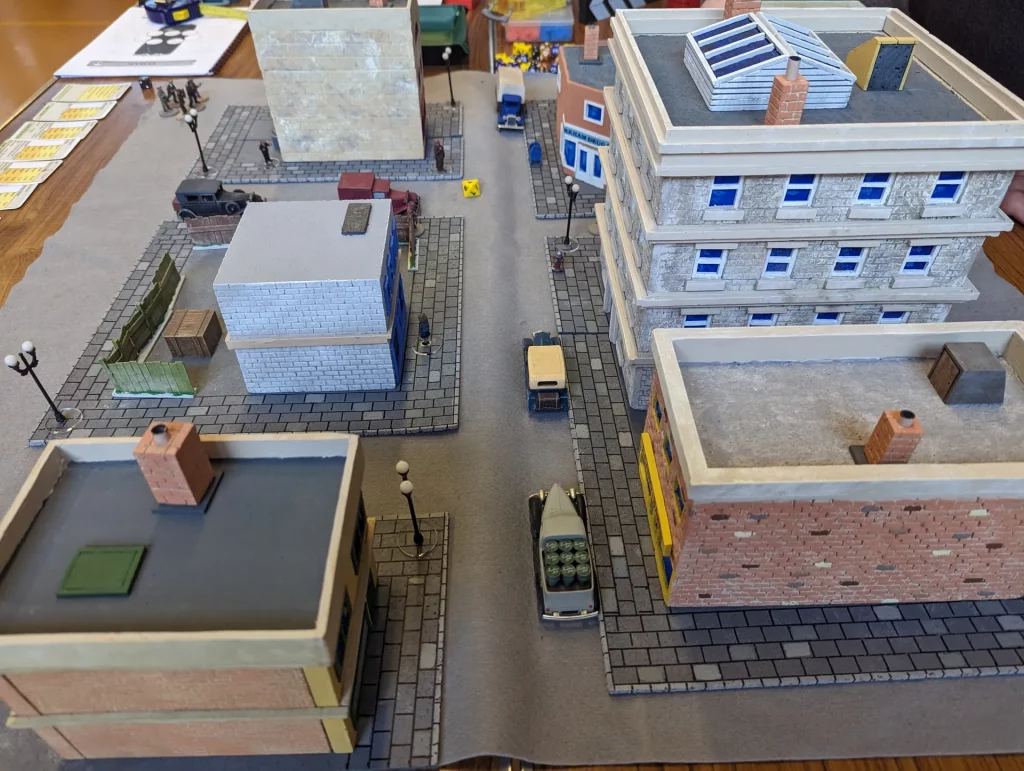
Scotland Yard started off in one corner, and we had to make it across to the main street to find our first plot point. The Phantasm and Egyptians were across the other side of town, where there were a greater density of plot point characters. This was a benefit – they had more opportunity to uncover plot events, but also a disadvantage. At the start of rounds cultists would spawn near to the plot characters.
As it happened, the Phantasm ended up getting swamped with cultists, and most of their game was spent in a fight on a street corner.
The Egyptians were just around the corner near the high street, and had a few cultists to handle but were in a better position.
The fight overlapped somewhat, with the Egyptians using their machine pistol to lay down suppressive fire on both the Phantasm and the cultists he was fighting. I’m not sure whether they were trying to help or hinder the Phantasm at this point. They took down another cultist on the high street outside the drug store as well.
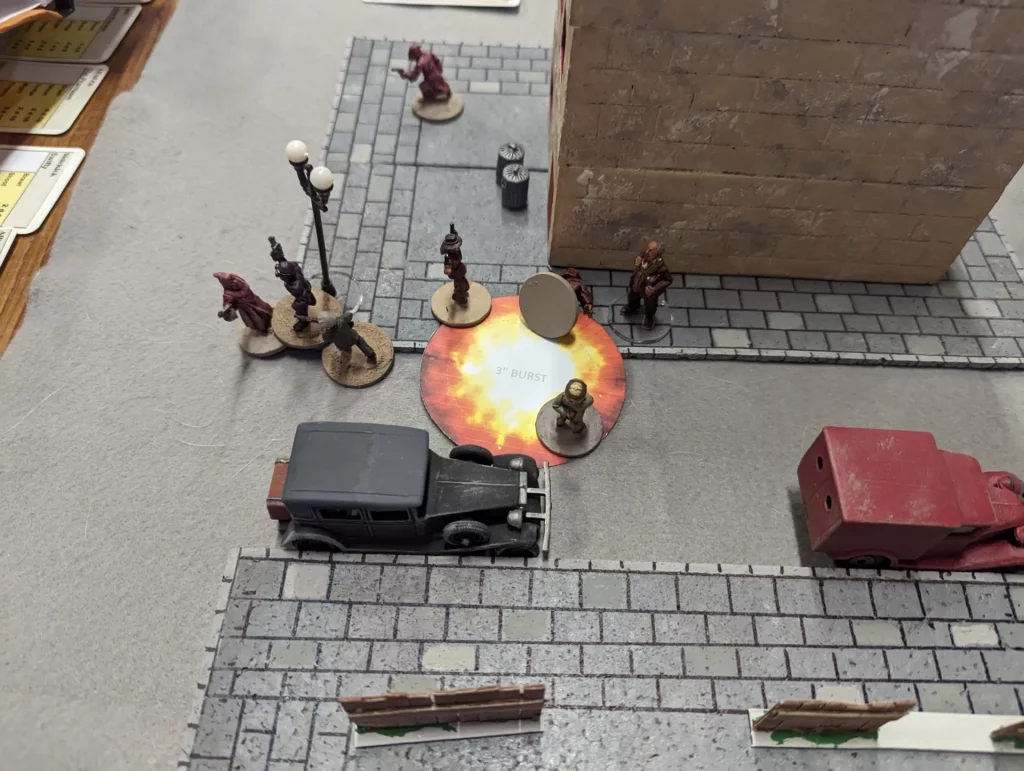
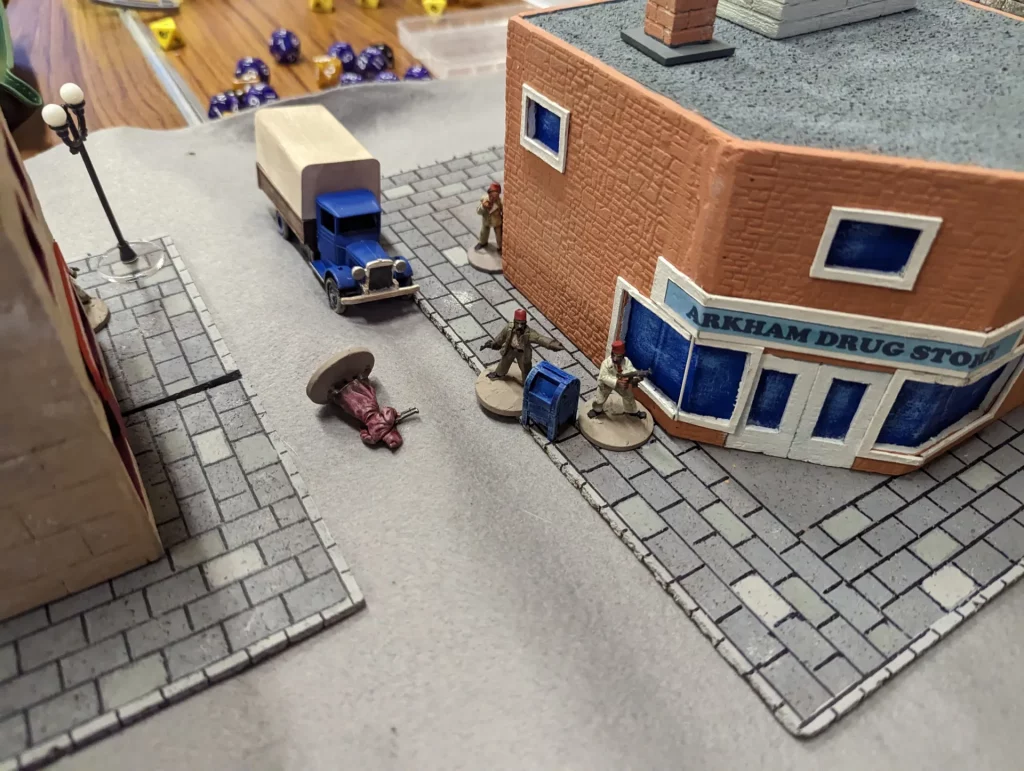
Meanwhile, down the other side of town, the Scotland Yard crew were making their way down the street. They’d spoken to the random woman plot point, and discovered the cult leader coming out of the neighbouring building.
Interacting with plot points and the cult leader requires a challenge to be met. Normally this is a skill check that needs a number of successes. A 4+ on a die roll is one success. If you have a skill of only 1D6 then chance of success is only 50%. However, if you have 3D10, then it’s obviously much higher.
For the major plot point (the cult leader), I needed two successes, which could be spread across multiple activations and rounds. I got one success on encountering him, then my Sir Denis Smith came across on the following round to get the second success. I grabbed the plans, and was now ‘winning’.
Dealing with the cult leader had sprung a trap – a member of the local police turned up to see what was going on, along with more cultists. Fighting these took out a couple of my men, and I was soon down to just Sir Smith and his sidekick Dr Petrie.
The Egyptians were also now heading down the street towards me, after the plans which I’d obtained from the cult. It was getting to the end of the game, so my aim was to get Sir Smith to somewhere safe, before anyone else could grab the plans.
There was a bit of a running battle between Scotland Yard and the Egyptians, but the Phantasm was still dealing with his own problems so wasn’t really involved. My final plan was to run away and hide behind some dustbins.
I’d figured out that three wounds would be needed to take down my leader, and he was currently unharmed. With the game moving into its final turn, unless the Egyptians had some special ability hidden away, there was actually nothing they could do to finish me off in time.
I turned out to be correct, and won the game, though Sir Smith was slightly beaten up by the end.
It was a relatively fast moving game. Characters had special abilities, and we also got special fortune cards each round which gave special abilities that could be used. A fortune card allows you to do things like cancel another character’s action, give yourself bonuses or modify challenge difficulties.
It was a fun game, and I actually got to win for a change, which was nice. Pulp Alley actually seems similar in style to 7TV, another skirmish game with a similar idea. I used to have 7TV, but I can’t find my copy anywhere. I have plenty of ‘street’ figures though which I got for use in various RPGs, which would probably fit in just fine.
What really made this game was the terrain, which was an excellent urban setting. Most of my terrain is rural/medieval, with very little urban stuff, especially for 28mm. I’m tempted to pick up this game or 7TV, and play it some more, but I’d need to think about how to handle terrain.
